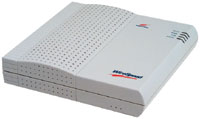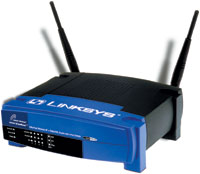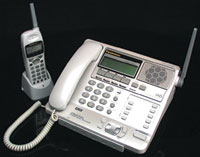'|'SPECIAL TO GCNWill digital subscriber line service'DSL for short'become the small-office success it's touted as, or will it suffer the fate of other high-speed telephone company data services?At the moment, it's tempting to place bets on both sides, given the dismal experiences of DSL companies and subscribers this year alone.The accompanying chart lists products that deliver DSL service to a home or small office. They are the easiest part of the equation. The problem so far has been getting the service delivered to users' hardware.The flameout of the Emeryville, Calif., DSL provider NorthPoint Communications in March focused attention on the fast-changing nature of such ventures. Hyped as a fast-track company poised for success in offering high-speed data services, NorthPoint's merger deal with Verizon Communications Inc. collapsed last November. That led to a 90 percent drop in the company's stock price, subsequent trouble raising capital and, on March 28, the abrupt cancellation of DSL service. An estimated 110,000 subscribers were left without service. AT&T Corp.'s broadband unit acquired some of NorthPoint's physical assets in a $135 million bankruptcy court bid, but not the company's customer accounts. Users were stuck looking for service.For cynics, the NorthPoint debacle was another brick in the wall of DSL problems. Horror stories among customers of incumbent local exchange companies are almost as common as DSL users. The Los Angeles Times and The Washington Post recently published tales of woe from customers trying to secure an installation, activate DSL or get their DSL service repaired, only to endure hours on hold and other frustrations.And some companies that have supported DSL may be losing faith. Just before presstime, 3Com Corp., which has products listed in the accompanying chart, announced it was discontinuing its line of DSL products.Add DSL's limited operating range of three miles from a telephone company's central office and the recent slowdown in the U.S. economy, and some people had no trouble in writing an early obituary for DSL as a technology.Defenders were quick to respond: Remember, DSL is only two years old and, as with any toddler, there are growing pains. One research company, Vertical Systems Group of Dedham, Mass., predicted last month that DSL connections in the United States will increase to 11.3 million in 2004, a number, it said, that will be dwarfed by global DSL growth.The attractive concept of delivering high-speed data communications over standard twisted-pair copper wiring has enticed telephone company engineers for years, but it has only been a reality in most major markets since about 1999. Before then, only a few areas had made stabs at offering DSL, including New York, Phoenix, Ottawa, Salt Lake City and San Francisco.DSL originated in the late 1980s as a potential alternative to cable TV service from telephone companies such as Bell Atlantic Corp. hoping to offer video on demand service to customers tired of cable TV's limitations. But even though DSL technology had the bandwidth to deliver video, customers weren't looking for that'at least, not in the way carriers had imagined.Instead, it was the arrival in force of the Internet that spurred broadband growth and gave DSL a shot at widespread adoption. The exchange companies had promoted 128-Kbps Integrated Services Digital Network lines for fast data connections, but a speed barely twice that of a 56-Kbps modem held little attraction for users with another broadband choice: cable modems.Cable TV companies, already reaching millions of homes with regular and fiber-optic cable, found ways to multiplex their cable wires to carry data and even voice telephony and TV programming. Cable Internet service, priced at $30 to $40 per month, took off. Kinetic Strategies Inc., a market research firm in Phoenix, said that as of June 1 cable Internet subscribers outnumbered DSL subscribers 6.45 million to 2.93 million.Cable has its limitations, too. Users essentially are on a party line, on which heavy user traffic can slow service. And the possibility of accessing other users' PCs exists with cable though not with DSL. But the quick rollout of cable Internet service, plus the fact that it can be available far from a cable company's central office, propelled it ahead of DSL.DSL is closing the gap, as manufacturers offer ways of extending the DSL signal further into a central office's territory. Late last month Lucent Technologies Inc. of Murray Hill, N.J., announced a new Stinger DSL access concentrator designed to extend service to difficult-to-reach customers. By working with the digital loop carrier (DLC) systems widely used to provide regular telephone service today, Lucent said, the Stinger Micro-Remote Terminal (MRT) lets service providers reach more customers using existing equipment.Unless they have a DSL access multiplexer (DSLAM), such as the pizza-box-sized Stinger MRT, DLC systems, which are often deployed in new housing developments and in suburban and rural areas, block users from receiving DSL service. Using a DSLAM with a DLC opens up access.There are are encouraging developments as well on the user's end. Early this month Jetstream Communications Inc. of San Jose, Calif., announced it would join Panasonic USA of Secaucus, N.J., to launch a broadband telephone delivering voice telephony over DSL connections.'By eliminating complex configuration and wiring requirements, installation takes minutes and is performed by the end user,' a Jetstream statement said. 'This removes the need for a costly visit by the service provider technician.'The company said the broadband phone, whose release date has not been set, will deliver integrated communication services over a DSL connection.A greater range and fancy phones could help spur DSL's growth. But according to Ernie Bergstrom, industry analyst with Cahners InStat Group in Scottsdale, Ariz., DSL's primary lures are still speed and flexibility.'There are 104 million homes in the United States. Of that, about 52 million have Internet access. Of that, 90 percent are still dial-up, but broadband has grown to almost 10 percent in two years,' Bergstrom said. 'There's a lot of potential for growth. I went to broadband about six months ago and will never go back.' XXXSPLITXXX-XXXSPLITXXX-
Devices are poised to receive broadband flow as soon as service providers can figure out how to connect with usersBY MARK A. KELLNERAnother one bites the dust | The Lowdown |
' What is DSL? Digital subscriber line technology offers broadband data communications over the standard twisted pair, two-strand copper telephone wiring found in most small offices and almost all homes in the United States.
' What does DSL offer? Depending on the service provider, the equipment used and the distance from a telephone central office location, its speed can approach 1.5 Mbps, equal to a dedicated T1 line but at less cost.
' Who is most likely to need or benefit from DSL? Industry experts and analysts generally agree that offices of fewer than eight people'and ideally no more than two or three'as well as telecommuters working from a fixed location are the most likely DSL users.
' What equipment do I need? A DSL provider often will include a DSL bridge, more commonly called a DSL modem, in its service package. You can buy and install your own modem, but there's no guarantee it will work with a company's system. With the modem, you might want an Ethernet hub that will let more than one device use the DSL connection. Each PC in an office will need either a network interface card or, if the hub is wireless, a wireless antenna, to communicate.
' Must-know info? If you are more than three miles from a telephone company's central office, don't worry. New equipment and service features are soon likely to extend the range of DSL service.
|
Adjusting the verticalMark A. Kellner is a free-lance technology writer in Marina Del Rey, Calif. E-mail him at mark@kellner2000.com.Asymmetric versions
- ADSL. Asymmetric DSL can share a phone line with voice service, because it uses a higher frequency than voice. It has different upstream and downstream speeds. ADSL is predominant among business and residential customers for whom downstream speed is most important, such as video-on-demand. Full-rate ADSL can deliver up to 6 Mbps downstream.
- G.lite ADSL. G.lite is a medium-bandwidth version of ADSL that allows Internet access at up to 1.5 Mbps downstream and up to 500 Kbps upstream.
- RADSL. Rate Adaptive DSL is a version of ADSL that adjusts speeds based on signal quality. Many ADSL technologies are actually RADSL.
- VDSL. Very-high-bit-rate DSL offers up to 26 Mbps over distances up to 50 meters on short loops such as from fiber to the curb. VDSL can also be configured in symmetric mode.
Symmetric versions
- Symmetric DSL services deliver equal speeds in both directions, which makes them useful for LAN access, videoconferencing and for locations hosting their own Web sites.
- HDSL. High-data-rate DSL delivers symmetric service at speeds of 1.5 Mbps or 2.3 Mbps in both directions.
- HDSL2. Second-generation HDSL delivers 1.5-Mbps service each way, supporting voice, data and video using either asynchronous transfer mode, private-line service or frame relay over a single copper pair.
- IDSL. Integrated Services Digital Network DSL is a form of DSL that supports symmetric data rates of up to 144 Kbps using existing phone lines.
- SDSL. Symmetric DSL is an umbrella term for vendor-proprietary versions that can include speeds to and from the customer ranging from 128 Kbps to 2.32 Mbps.
- SHDSL. Symmetric HDSL extends the loop-reach of older versions of symmetric DSL by 20 percent. SHDSL systems operate from 192 Kbps to 2.3 Mbps. Although SHDSL does not carry voice like ADSL, new voice-over-DSL techniques can be used.
Company |
Product |
Function |
Features |
Price |
Alcatel USA Inc.
Plano, Texas
800-252-2835
www.alcateldsl.com |
Speed Touch USB Modem |
Connects notebook or desktop
PCs with USB support |
High-speed Internet access and regular phone service on the same line; up to 8 Mbps downstream, 1 Mbps upstream; supports Windows, Mac and Linux; USB-port powered |
$180 |
Speed Touch Pro with Firewall |
Small-office DSL router with built-in firewall |
Allows multiple users to share one ADSL connection and IP address; stops Internet attacks before they reach PC |
$305 |
Arescom Inc.
Fremont, Calif.
888-575-4736
www.arescom.com |
NetDSL 800 series
ADSL modem |
Supports multimode, ADSL, G.Lite, G.DMT and T1.413 versions of DSL service |
Incorporates 10Base-T Ethernet; can also support USB connectivity |
$299 |
EZRider Internet Access
Router |
Sits behind modem to connect multiple devices to DSL connection |
Ethernet-to-Ethernet router, 10Base-T in, three 10/100 out ports |
$229 |
Aztech Labs Inc.
Fremont, Calif.
510-623-8988
www.aztech.com | Aztech DSL TurboRouter
9100R | ADSL router with built-in four-port 10/100Base-T/TX Fast Ethernet Switch | Delivers full-rate DSL transmission at up to 8 Mbps downstream and up to 640 Kbps upstream | $299 |
DSL Turbo 900E External
ADSL modem | External DSL modem with Ethernet port | Delivers full-rate DSL transmission at up to 8 Mbps downstream and up to 640 Kbps upstream | $249 |
Cisco Systems Inc.
San Jose, Calif.
800-553-6387
www.cisco.com |
Cisco SOHO 77
ADSL Router |
Multiport Ethernet DSL router |
Provides multiuser access with a single DSL connection and Internet security with packet-filtering firewall |
$549 |
Efficient Networks Inc.
Dallas
972-852-1000
www.efficient.com |
SpeedStream Dual
USB/Ethernet modem |
DSL modem |
Concurrent USB and Ethernet support |
$549 |
5950 SHDSL Business Gateway |
SHDSL gateway |
Full virtual private network support with encryption, 10/100 Ethernet eight-port switch |
$599 |
Intel Corp.
Santa Clara, Calif.
408-765-8080
www.intel.com |
AnyPoint DSL Gateway 4200 |
User-installable DSL gateway |
Self-configuring firewall, compatible with major DSLAM systems |
$249 |
Linksys Group Inc.
Irvine, Calif.
800-546-5797
www.linksys.com |
EtherFast Wireless AP and
Cable/DSL Router with
4-Port Switch |
Connects to broadband modem to share DSL connection |
Wireless access point and four-port hub shares DSL connection with multiple users in office or home |
$289 |
Multi-Tech Systems Inc.
Mounds View, Minn.
800-328-9717
www.multitech.com |
MultiModemDSL |
USB modem that supports up to 8-Mbps connections |
ADSL diagnostics tool for Windows included; splitterless mode for end-user installation and configuration |
$219 |
3Com Corp.
Santa Clara, Calif.
877-949-3266
www.3com.com |
OfficeConnect Remote
812 ADSL Router |
Secure, shared high-speed Internet and corporate LAN access for small offices |
Connects to an Ethernet port or supports multiple connections with a built-in 10Base-T hub; full support for network address translations; up to 16 concurrent connections; full routing and bridging capabilities |
$599 |
HomeConnect ADSL
Modem Dual Link |
Shares DSL access with two PCs |
USB and Ethernet connectivity |
$329 |
Westell Technologies Inc.
Aurora, Ill.
630-898-2500
www.westell.com |
WireSpeed DMT ADSL External Ethernet Modem |
External DSL modem |
Single 10Base-T Ethernet interface for PC-to-ADSL modem connection |
$235 |








